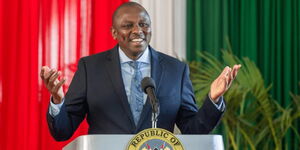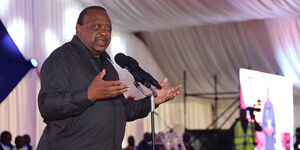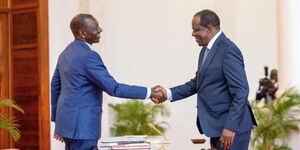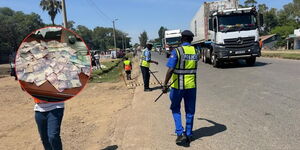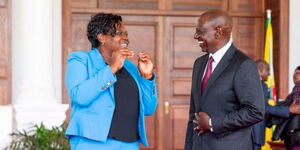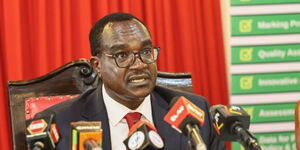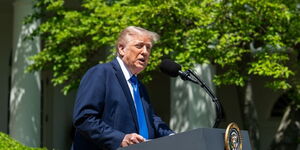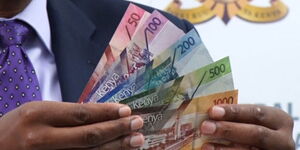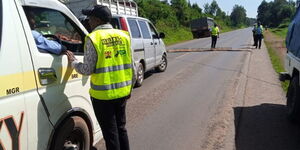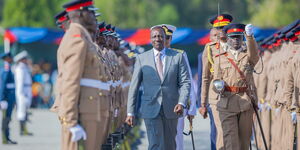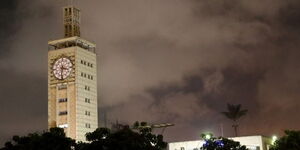Whenever you take a walk in Nairobi Central Business District (CBD), you will instantly be attracted by the commercial skyscrapers that blend with monumental buildings of British origin.
What captivates more are the road networks which boast of rich history. Nairobi has transformed over time since it was declared a city in 1950.
The names, however, did not come easy as the roads were named and renamed time and again, depending on different occurrences, people and other factors before and after Kenya gained independence in 1963.
Kenyatta Avenue
This is the most common and popular street in Nairobi. It was named after the first president of Kenya, Mzee Jomo Kenyatta.
It was originally called Sixty Avenue and renamed as Lord Delamere Avenue in 1932 following the death of Lord Delamere. Delamere was honoured for being the pioneer white settler and colonial administrator.
Outside the New Stanley Hotel, Delamere had erected a statue at an “island” between Kenyatta Avenue and Kimathi Street
In the early 1930s, however, the Delamere family asked the government to remove it and it was relocated to Soysambu ranch in Elementaita, Naivasha.
In memory of those who died in the two World Wars, a memorial monument of three soldiers was erected on Kenyatta Avenue.
Four streets branch out of Kenyatta Avenue, namely Kimathi Street, Muindi Mbingu Street, Wabera Street and Koinange Street, which had originally been named after the first, second, third and fourth colonial commissioners who were later given legislative powers to become governors.
Moi Avenue
This road was renamed after the second President of Kenya Daniel Arap Moi. Initially, it was known as First Station Road between 1899 and 1902. Thereafter, it was renamed Government Road in 1901 as most government offices were situated along that road such as Ministry of Lands, which was in present-day Moi Avenue Primary, while Imenti House was the Town Hall.
Its initial name was Victoria Street, named after the queen. It was renamed to Tom Mboya, the prominent politician who was assassinated in 1969. Mboya was a key figure in the formation of the Kenya African National Union (KANU) and the Minister of Economic Planning and Development at the time of his death in 1969.
A monument in his honor is erected on Moi Avenue. In the 1950s, several key places on this road were Victoria Bar, which was a popular joint with the British Army and the Chez Joseph restaurant, which is the modern-day Express Bar.
Kimathi Street
The original name of this road was Hardinge Street. It was later renamed Kimathi Street after Field Marshall freedom fighter, Dedan Kimathi, as a way of honouring his role in the Mau Mau war.
There was a central bus station near the Hilton Hotel and Empire Cinema which occupied the current space where IPS Building stands today.
Kenwood Building housed the Kenya Power and Lighting headquarters while Woolworth Building was opened in 1914.
The Stanley House, built in 1902, was also based on this street and the Horse Shoe Coffee Bar was opposite the present-day Nation Centre.
A statue of Dedan Kimathi, made by Francis Kaguru, was erected at the northern side of the Hilton Hotel a few years ago.
Ronald Ngala
It was previously known as Duke Street after the British noblemen of the highest hereditary rank. After independence, this road was renamed after Ronald Ngala, a member of the Kenya African Democratic Union (KADU) during Kenyatta’s government. Ronald Ngala died in a road accident in 1970. There was a gunsmith shop situated where modern-day Tuskys Supermarket is.
Mfangano Street
This street is rich in Indian history. Its original name was Jivanjee Avenue, and it was named after Alibhai Mula Jivanjee, an Asian born citizen.
He blessed Nairobian’s with one of the coolest park for resting, Jivanjee Gardens. In the garden, Alibhai placed a statue of Queen Victoria, and his monument, which was unveiled in 1904 by the Duke of Collaught.
The entrepreneur owned most of the buildings east of Moi Avenue after becoming a wealthy building contractor. He placed a statue of Queen Victoria, a monument of himself, which was unveiled in 1904 by the Duke of Collaught.
Muindi Mbingu Street
Formerly Stewart Street, the road was named in honour of Ukambani freedom fighter Samuel Muindi Mbingu, who led a protest from Machakos to Nairobi, with natives who were unhappy with a colonial policy requiring that Africans de-stock cattle by seizing the cattle by force, taking away their wealth.
Mbingu led the protest match from Machakos and was arrested when they arrived in Nairobi and deported to Kismayo. He eventually died in 1953.
Biashara Street
It was formerly known as Bazaar Street, the Indian word for (biashara or business). The street had Indian wholesalers who also owned most of the shops.
Biashara Street experienced its first major change in 1916 as a result of the bubonic plaque when Indian shopkeepers moved away temporarily.
Koinange Street
It was named after paramount chief Koinange wa Mbiyu who worked for the British colonial government but was not shielded from the humiliation when the colonial government gave a directive that natives were not allowed to grow cash crops such as coffee.
Koinange defied that directive and went ahead to try his hand in coffee farming, which had been brought by the British. The street was named after him for his courage in fighting for the grievances of Africans.
Wabera Street
The street was named after the first African Isiolo District Commissioner, Daudi Dabasso Wabera, who was gunned down protecting Kenyan territory against Somalis who wanted to take over northern Kenya from Isiolo upwards.
Murang'a Road
This road was previously called Forthall Street or Swamp Road because Nairobi was swampy especially the area near the Nairobi River.
In the 1950s, there was a popular Indian curry house called Friends Corner Bar and Restaurant and a prominent lawn mower repair shop near the modern-day Red Crescent.
Where the Fig Tree Bar and Restaurant now stands, there was the Lady Grid Hospital. The street also housed the Sikh Union Temple and behind it was the Goan Institute.
University Way
It was previously named Kingsway or Tenth Avenue. All state delegates used Moi Avenue and University Way as they headed to The Government House (the current State House). University Way housed Kingsway Police Station, which is modern-day Central Police Station.
It had the Persian carpet shop situated at the corner of Kingsway House, which also housed the Special Branch headquarters after Kenya gained independence.
Also situated on that road was the Royal College, Nairobi, which is today the University of Nairobi. The Jewish synagogue is situated there even today.
Haile Selassie
This was previously called White House Road named after the Chief Railways Engineer George Whitehouse.
According to historical documents, this road held the East African Railways and Harbours Headquarters and White House Bakery in the 1950s. Near the Kenya Polytechnic (currently the Technical University of Kenya) was the Road Avenue Clinic and the government press.
Mama Ngina Street
Prior to being renamed after Mama Ngina, President Uhuru Kenyatta’s mother and Kenya's pioneer First Lady, this street was known as Queens Way during the colonial era.
A famous coffee bar called Act 1 Scene 1 stood opposite the entrance of City Hall at Travel House, formerly UTC building.
What stands out for this street is that there was (and still is) the Twentieth Century cinema and Barclays Queensway branch. The bank retained the original name of the road.

